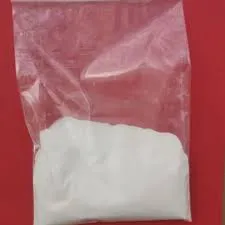Laser Marking Additives for Plastics Enhancing Identification and Branding
In the ever-evolving landscape of industrial manufacturing and product branding, marking and identification of products play a crucial role. Among various methods available, laser marking has emerged as a sophisticated and highly effective technique for marking plastics. The technology's precision, speed, and ability to create durable and high-contrast markings have made it the preferred choice for numerous applications. However, to optimize the effectiveness and quality of laser marking on plastics, the incorporation of laser marking additives has proven invaluable.
Understanding Laser Marking
Laser marking involves using a focused laser beam to engrave or mark a surface. It is a non-contact method that provides superior accuracy compared to traditional marking methods like ink printing, which may wear off over time. The process can create permanent marks that are resistant to abrasion, heat, and chemicals, thereby ensuring long-lasting visibility and readability. This is particularly important in industries such as automotive, electronics, medical devices, and consumer goods, where identification and traceability are paramount.
The Role of Additives
Laser marking additives are specially formulated compounds that can be incorporated into plastic materials to enhance laser marking quality. These additives can serve multiple purposes they can improve contrast between the marked areas and the unmarked surfaces, influence the depth and sharpness of the markings, and ultimately affect the visual and physical properties of the final product.
There are two main types of laser marking additives
1. Absorbers These additives are designed to absorb laser energy effectively. When the laser hits the marked surface, the absorbers transform the laser energy into heat, which causes the polymer to undergo a chemical reaction or physical change, resulting in a visible mark. Common materials used as absorbers include carbon black, certain metal oxides, and dyes specific to laser wavelengths.
2. Expanding Additives These are materials that expand when heated, producing a raised marking effect. When used in conjunction with laser systems, expanding additives create a three-dimensional appearance for the marked areas, which can be beneficial for branding purposes. Additionally, they can enhance contrast, particularly on lighter colored plastics.
laser marking additives for plastics

Benefits of Using Laser Marking Additives
1. Enhanced contrast One of the significant benefits of using laser marking additives is the remarkable contrast they can produce. This is crucial for applications where legibility and visibility are essential, such as barcodes, QR codes, and logos. Improved contrast ensures that the markings remain readable even in adverse environments.
2. Customization Laser marking additives allow manufacturers the flexibility to customize their markings according to specific requirements. Whether it is a particular color, depth, or design, the additives can be tailored to achieve the desired outcome.
3. Durability The integration of laser marking additives enhances the durability and longevity of the markings. Products marked with the aid of these additives are less susceptible to fading or wearing off, ensuring that the identification remains intact throughout the product's lifecycle.
4. Environmentally Friendly Many laser marking additives do not contain harmful solvents or chemicals, making them a more environmentally friendly option compared to traditional marking methods that may require inks or solvents.
Choosing the Right Additive
When selecting laser marking additives, several factors must be considered, including the type of plastic substrate, desired marking characteristics, and the specific laser system being used. Collaborating with suppliers who specialize in laser marking technologies can help manufacturers identify the most suitable additives to achieve their marking goals.
Conclusion
Incorporating laser marking additives into plastic materials is revolutionizing how products are marked and identified in various industries. By enhancing contrast, customization, and durability, these additives are improving both the functionality and aesthetic appeal of marked products. As laser technology continues to advance, the role of laser marking additives will undoubtedly become more significant, paving the way for innovation and excellence in product marking and identification.

